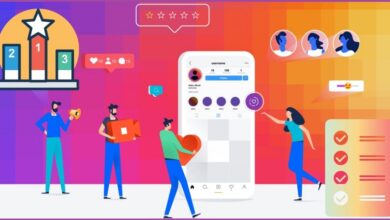Empowering Immigrants: Tools to Navigate Language Barriers in a New Country

Immigrating to a new country is a profound transition with various challenges, with language barriers among the most significant. For immigrants, mastering the language of their new home is crucial for communication and accessing essential services, securing employment, and integrating into the community. Fortunately, in the digital age, a variety of tools and resources, such as USCIS Translation services, are available to help immigrants overcome these language barriers and successfully navigate their new environment.
The Importance of Language Proficiency for Immigrants
Language proficiency is foundational to an immigrant’s ability to thrive in a new country. It affects almost every aspect of daily life, including:
- Employment: Employers often require a certain level of language proficiency. Effective communication can enhance job prospects and career advancement.
- Healthcare: Understanding and being understood by healthcare providers is essential for receiving appropriate medical care.
- Education: Language barriers can hinder educational opportunities for adults and their children.
- Social Integration: Building relationships and participating in community activities are more accessible when language barriers are minimized.
- Legal Matters: Navigating legal systems and understanding rights and obligations require a good grasp of the local language.
Tools to Help Overcome Language Barriers
Various tools and resources have been developed to address these challenges, ranging from language learning apps and translation devices to community programs and government services.
Language Learning Apps
Language learning apps are among the most accessible and popular tools for immigrants. These apps offer flexible, on-the-go learning opportunities that can fit into newcomers’ busy lives.
- Duolingo: Duolingo offers engaging and effective gamified language lessons. It covers a wide range of languages and is suitable for beginners.
- Babbel: Babbel focuses on conversation skills and practical language usage, making it particularly useful for immigrants who need to acquire conversational proficiency quickly.
- Rosetta Stone: Known for its immersive learning approach, Rosetta Stone helps users learn a new language in a context that mimics natural language acquisition.
Real-Time Translation Devices
Real-time translation devices can be handy for immediate communication needs. These devices translate spoken language in real time, facilitating conversations that would otherwise be difficult.
- Pocketalk: Pocketalk is a portable translation device that supports over 70 languages. It’s beneficial for on-the-spot translation during conversations.
- ili Wearable Translator: This device is designed for travelers and immigrants. It provides instant translations without needing an internet connection.
- Travis Touch: Travis Touch offers translation in over 100 languages and can be a lifesaver in situations where understanding and being understood are critical.
Multilingual Communication Platforms
Multilingual communication platforms can bridge language gaps for those who need to communicate in a professional or educational setting.
- Slack with Translation Integrations: Slack, a popular workplace communication tool, can be integrated with translation services to facilitate multilingual team interactions.
- Microsoft Teams: Microsoft Teams offers built-in translation features that help conduct meetings and collaborations across different languages.
- Zoom with Language Interpretation: Zoom provides features for language interpretation that are particularly useful for webinars, conferences, and meetings involving participants from diverse linguistic backgrounds.
Community Language Programs
Community language programs offer in-person and online classes tailored to immigrants. These programs not only teach language skills but also provide cultural orientation.
- Local Community Colleges: Many community colleges offer ESL (English as a Second Language) courses specifically designed for immigrants.
- Nonprofit Organizations: Organizations like the YMCA and local cultural centers often provide free or low-cost language classes and conversation groups.
- Public Libraries: Libraries frequently offer language learning resources and classes, as well as access to multilingual staff who can assist with various services.
Government and Public Services
Governments in many countries provide resources to help immigrants overcome language barriers.
- Settlement Services: Government-funded settlement services offer language training, employment assistance, and other support to help newcomers integrate.
- Multilingual Information Portals: Websites like Canada’s “Welcome to Canada” portal provide information in multiple languages to help immigrants navigate their new environment.
- Interpreter Services: Public services such as healthcare, legal aid, and social services often provide interpreter services to ensure that immigrants can access necessary support.
The Role of Technology in Empowering Immigrants
Technology plays a crucial role in helping immigrants overcome language barriers. With the advent of smartphones and the internet, access to language learning and translation tools has become easier than ever. Here are a few ways technology is making a difference:
- Mobile Accessibility: Smartphones have allowed immigrants to carry language learning tools and translation services in their pockets. This convenience is invaluable for those who are constantly on the move or working multiple jobs.
- AI and Machine Learning: Advances in AI and machine learning have significantly improved the accuracy of translation tools. Services like Google Translate have become more reliable, offering nuanced translations that account for context and idiomatic expressions.
- Virtual Reality (VR): VR language learning programs offer immersive experiences that mimic real-life interactions, providing a more effective learning environment than traditional methods.
Challenges and Considerations
While these tools are beneficial, there are challenges and considerations to keep in mind:
- Access to Technology: Not all immigrants have access to smartphones or reliable internet connections, which can limit their ability to use these tools.
- Cultural Differences: Language learning tools may only sometimes account for cultural nuances crucial for effective communication.
- Privacy Concerns: Using translation apps and devices can raise privacy concerns, especially when communicating sensitive information.
Conclusion
Navigating language barriers is one of the most significant challenges immigrants face in a new country. However, the right tools and resources can significantly mitigate this challenge. Language learning apps, real-time translation devices, multilingual communication platforms, community language programs, and government services all play a vital role in empowering immigrants. For instance, utilizing reliable translation services for USCIS ensures that official documents are accurately translated, which is crucial for legal processes. As technology evolves, the tools available to help immigrants integrate and thrive will become more sophisticated and accessible, offering hope for smoother transitions and richer multicultural interactions.



